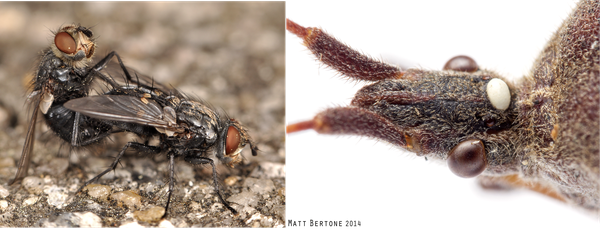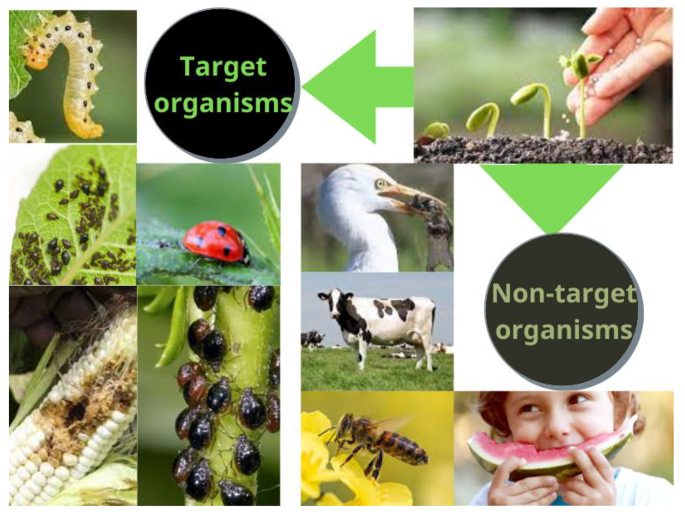What Does Eco Bed Bug Exterminators Dc Do?
What Does Eco Bed Bug Exterminators Dc Do?
Blog Article
Eco Bed Bug Exterminators Dc Fundamentals Explained
Table of ContentsNot known Details About Eco Bed Bug Exterminators Dc Eco Bed Bug Exterminators Dc Can Be Fun For AnyoneThe Greatest Guide To Eco Bed Bug Exterminators DcNot known Facts About Eco Bed Bug Exterminators DcExamine This Report on Eco Bed Bug Exterminators Dc
Since pesticides are poisonous, they are also potentially harmful to people, pets, other microorganisms, and the environment. Individuals who use pesticides or routinely come in call with them should comprehend the loved one poisoning, prospective health impacts, and preventative actions to minimize exposure to the items they use. Risk, or risk, of utilizing chemicals is the capacity for injury, or the degree of danger associated with making use of a chemical under a given collection of conditions.
Applicators can reduce or almost get rid of direct exposure-- and therefore decrease risk-- by following the tag instructions, utilizing individual protective clothes and tools (PPE), and managing the chemical effectively. For instance, greater than 95 percent of all chemical exposures originate from facial exposure, largely to the hands and forearms. By using a set of unlined, chemical-resistant gloves, this kind of exposure can be nearly eliminated.
The damaging results that take place from a single exposure by any kind of path of entrance are termed "intense impacts." The four courses of exposure are dermal (skin), breathing (lungs), dental (mouth), and the eyes. Intense toxicity is identified by checking out the dermal poisoning, breathing poisoning, and oral poisoning of test animals.
Eco Bed Bug Exterminators Dc Things To Know Before You Buy
Severe poisoning is determined as the quantity or concentration of a toxicant-- the a.i.-- called for to eliminate 50 percent of the animals in a test population. This step is normally revealed as the LD50 (dangerous dose 50) or the LC50 (deadly concentration 50). In addition, the LD50 and LC50 values are based upon a solitary dose and are recorded in milligrams of chemical per kilo of body weight (mg/kg) of the test pet or in components per million (ppm).
The lower the LD50 or LC50 worth of a pesticide product, the greater its toxicity to human beings and pets. Pesticides with a high LD50 are the least hazardous to people if used according to the instructions on the product tag. The chronic poisoning of a pesticide is determined by subjecting examination animals to long-lasting direct exposure to the energetic component.
The chronic toxicity of a chemical is a lot more challenging than acute toxicity to determine through research laboratory analysis. Products are classified on the basis of their relative acute toxicity (their LD50 or LC50 values). Pesticides that are categorized as extremely hazardous (Toxicity Category I) on the basis of either dental, facial, or breathing poisoning should have the signal words threat and poisonous substance printed in red with a head and crossbones symbol prominently displayed on the front panel of the plan label.
The severe (single dosage) oral LD50 for chemical products in this team ranges from a trace amount to 50 mg/kg. For instance, exposure of a couple of declines Click This Link of a material taken by mouth might be fatal to a 150-pound individual. Some pesticide items have simply the signal word DANGER, which tells you absolutely nothing concerning the severe poisoning, simply that the item can trigger severe eye damages or serious skin inflammation
The smart Trick of Eco Bed Bug Exterminators Dc That Nobody is Discussing
In this category, the severe dental LD50 arrays from 50 to 500 mg/kg. A tsp to an ounce of this material can be deadly to a 150-pound person (pest control Washington DC). Chemical products classified as either a little hazardous or fairly harmless (Poisoning Categories III and IV) are needed to have the signal word CAUTION on the chemical tag

All chemical poisoning worths, consisting of the LD50, can be located on the item's Product Security Data Sheet (MSDS) - bed bug heater rentals. Pesticide labels and MSDS can be obtained from stores or produces. On top of that, a lot of products likewise know that can be found on the web. The signs of chemical poisoning can vary from a light skin irritability to coma or perhaps fatality.
Because of potential wellness concerns, chemical users and handlers need to recognize the usual indications and signs of chemical poisoning. The effects, or signs, of chemical poisoning can be generally defined as either topical or systemic.
4 Easy Facts About Eco Bed Bug Exterminators Dc Described
Dermatitis, or swelling of the skin, is accepted as the most commonly reported topical result connected with chemical exposure. Some individuals have a tendency to cough, hiss, or sneeze when revealed to pesticide sprays.
This signs and symptom typically subsides within a few minutes after a person is eliminated from the direct exposure to the irritant. A response to a pesticide item that creates somebody not only to sneeze and cough however also to develop severe acute respiratory symptoms is extra most likely to be a true hypersensitivity or allergic response.
Systemic impacts are fairly various from topical impacts. They commonly happen away from the initial factor of get in touch with as an outcome of the chemical being taken in into and dispersed throughout the body.
Report this page